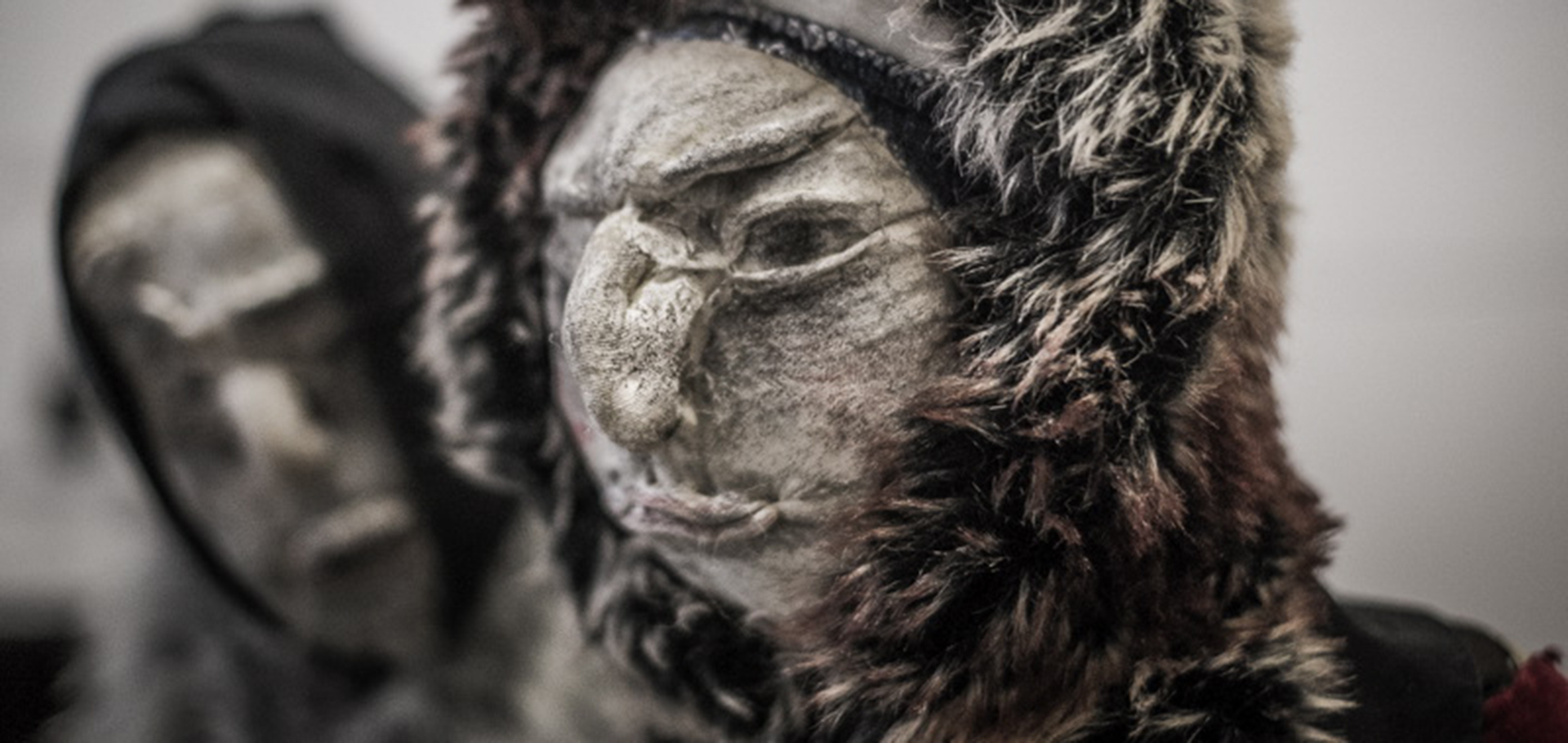Out of Kilter Theatre Company writer Mark Murphy blogs about his new play, Things of Darkness, addressing PTSD and alienation, while Manchester-based artist Teresa Wilson, whose work explores the space between sculpture, installation and theatre, explains her accompanying art display
Mark Murphy
How does a story begin?
For me, invariably, it starts with a picture in my head. Even if the picture is accompanied by an idea, it is the image, first and foremost, that pesters until I begin to search for the answers as to who or what it is, what it means, what it wants.
And that is how Things of Darkness began to take shape – an image of a strange creature unfurling slowly from the ceiling or the wall of a room like an animal that has been cooped up for a long time. And in that room a young man sits and waits.
I tried not to think about it too much. I just let it float at the back of my mind. Occasionally I jotted down an idea.
Then, at some point, as I tried to focus on this creature, she began to take shape in my imagination and I wondered: “Well, what if she was a fairy?” Not the type you may find in a Disney version of a Hans Christian Andersen story but more like those of myth or older folk tales, which were mysterious, uncanny, threatening even.
And the young man – who was he? In traditional fairy tales such as The Tinder Box a soldier returning from the war is a central character. So why not do the same for a modern tale? Two apparent opposites, lost for different reasons, looking for something. And then, in tales of the uncanny, what of doppelgangers, strange coincidences, things that are familiar yet unknown?
As soon as I asked these questions the ideas intrigued and fascinated me. I had already read books by Marina Warner on fairy tales and ideas of metamorphosis. So I revisited her work and this led me to other writings on the subject. This in turn opened out into ideas around boundaries and thresholds, then Jung, Freud’s article on the uncanny, the work of the Surrealists, the tales of Hoffmann, Julia Kristeva on abjection and her writings on the concept of the other, Borges, ideas of magic in different cultures.
Just as I had done with my reading, when I started writing I allowed my mind to wander and make its own connections. Taking a cue from the Surrealists’ approach to creativity I switched off my internal censor (sometimes you have to fight it) and allowed the story to find itself. Apparently random connections were made and as I explored further I realised some of the links were through ideas and language rather than any form of naturalistic narrative.
The tale has had many drafts since then – things have been changed, honed and tightened up – but it has, I hope, retained the spirit that was there when that image first drifted into my head.
For me, any creative work should be the start of a conversation, not the end, whether that conversation is with yourself, your lover, your neighbour, a hundred other people or maybe more.
I hope that Things of Darkness, in its own small way, is the seed for many conversations.
Teresa Wilson
I first met Mark Murphy, the author of the new play Things of Darkness, while my sculpture exhibition Changelings was showing at the Chapman Gallery in Salford in 2010.
Changelings are known in traditional fairy stories and folk legends to be non-human fairy creatures, small wizened and strange looking, and thought to have been switched by mischievous little people who had stolen away the unfortunate mother’s healthy pretty baby, leaving their own skinny one in its place.
I wondered at the time whether these strange stories, some of which are violent, scary and also funny (in a dark way), were actually a poetic way of describing something real. At a time when babies did not always thrive, when hormonal or thyroid problems causing growth retardation were not known about, how would a mother understand and integrate her distress at finding her baby was getting pale, thin and wrinkly looking? In many of the stories the mother has to try to kill the changeling, often in an imaginatively gruesome way, in order to force the fairy to return her own child. Could these stories be describing mothers’ experience of rejecting a baby due to post-natal depression?
At the time of meeting him, Mark was already forming the ideas for the main character in Things of Darkness – a soldier returned from the trauma of war, who meets a fairy girl and sets off on an emotional journey with her. We, the audience, go on the journey with him through the play and are asked to question whether we really know what is real and what is the symptom of his mental distress?
Today I was delighted to set up several of my textile puppet sculptures around the front of house area of Hope Mill Theatre to coincide with the premiere showing of Things of Darkness. The audience is invited to engage with the strange little people before entering the auditorium and sitting down to be transported into a strange and disconcerting otherworld of the production of Things of Darkness.
Things of Darkness is part of Greater Manchester Fringe Festival and is at Hope Mill Theatre, 13-14 July. Visit Teresa Wilson’s website here



Leave a reply
Your email address will not be published.